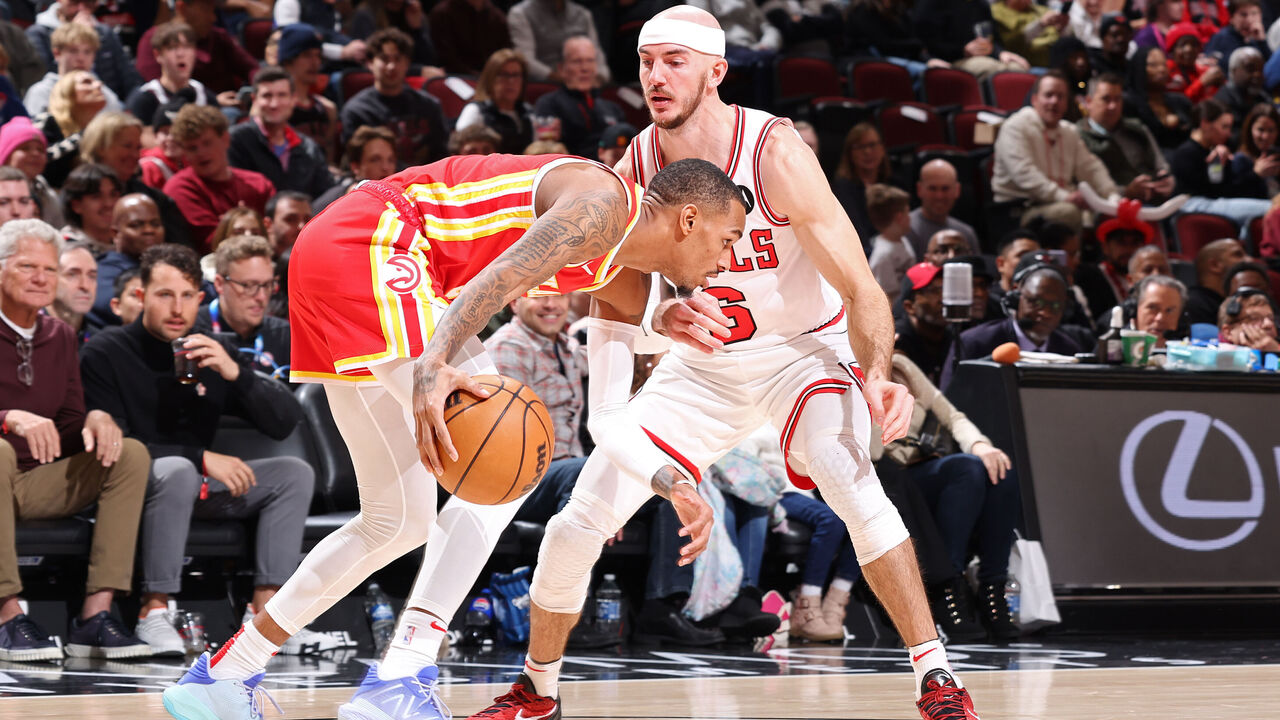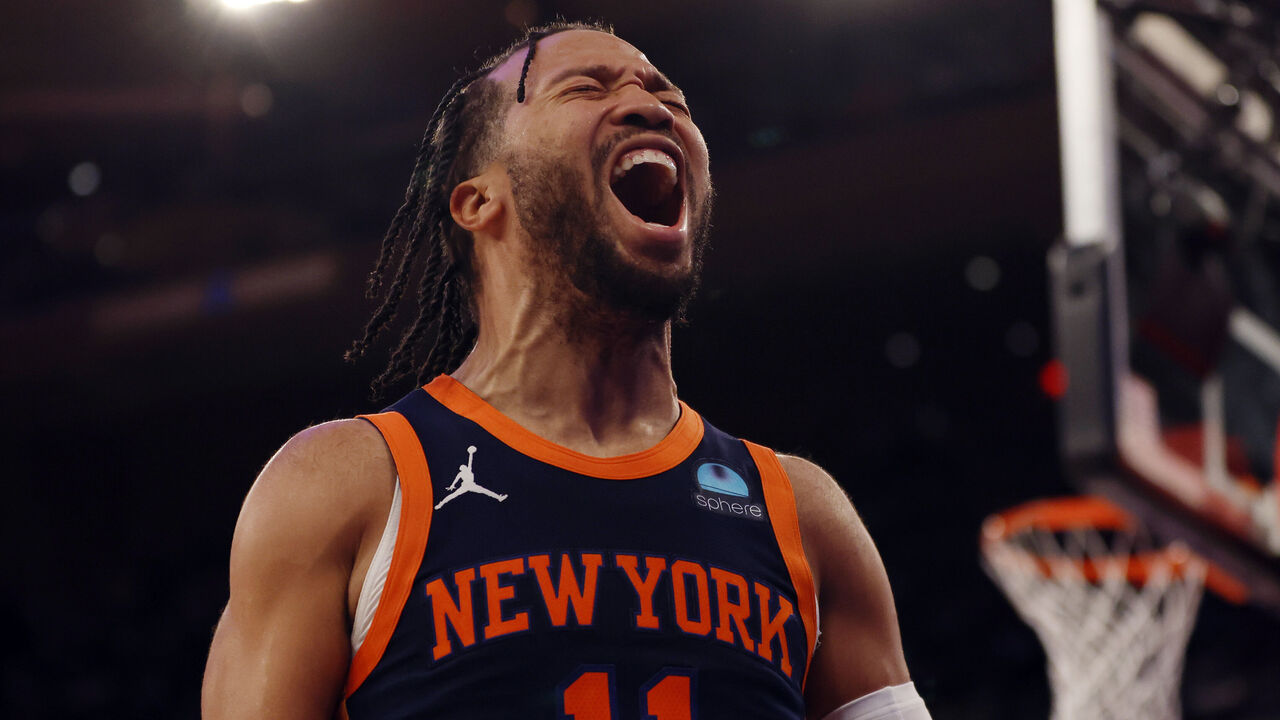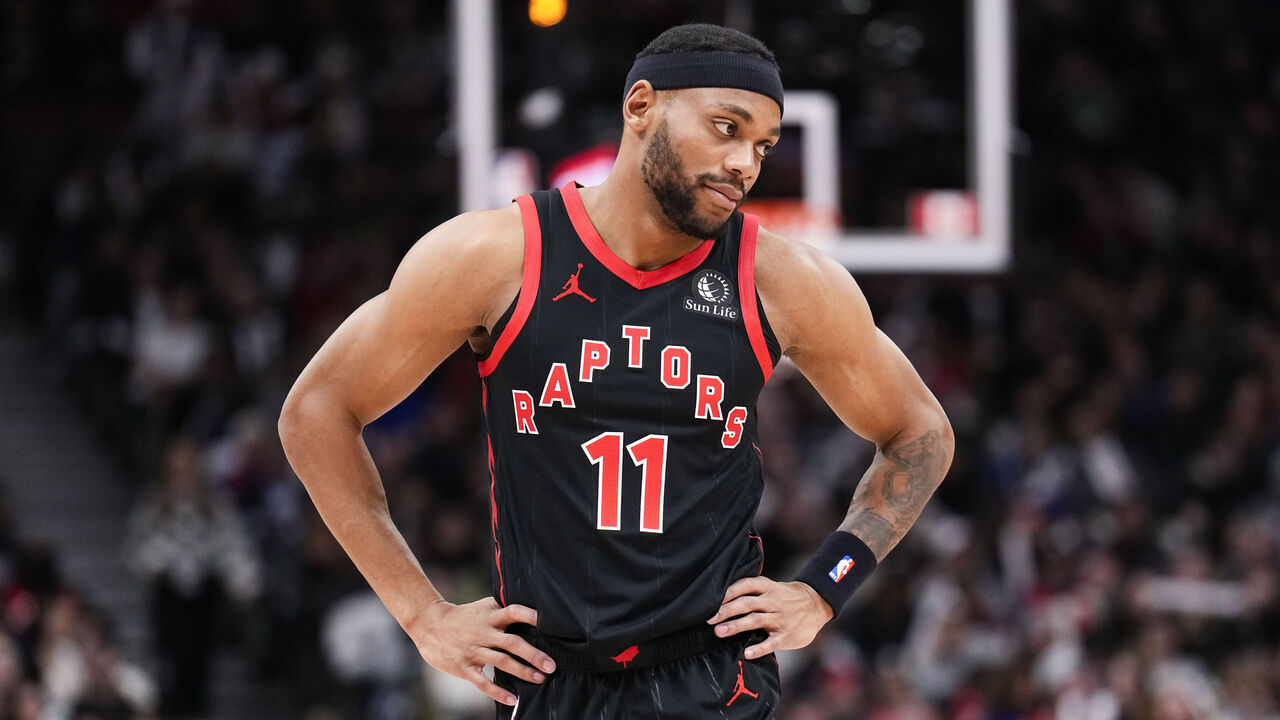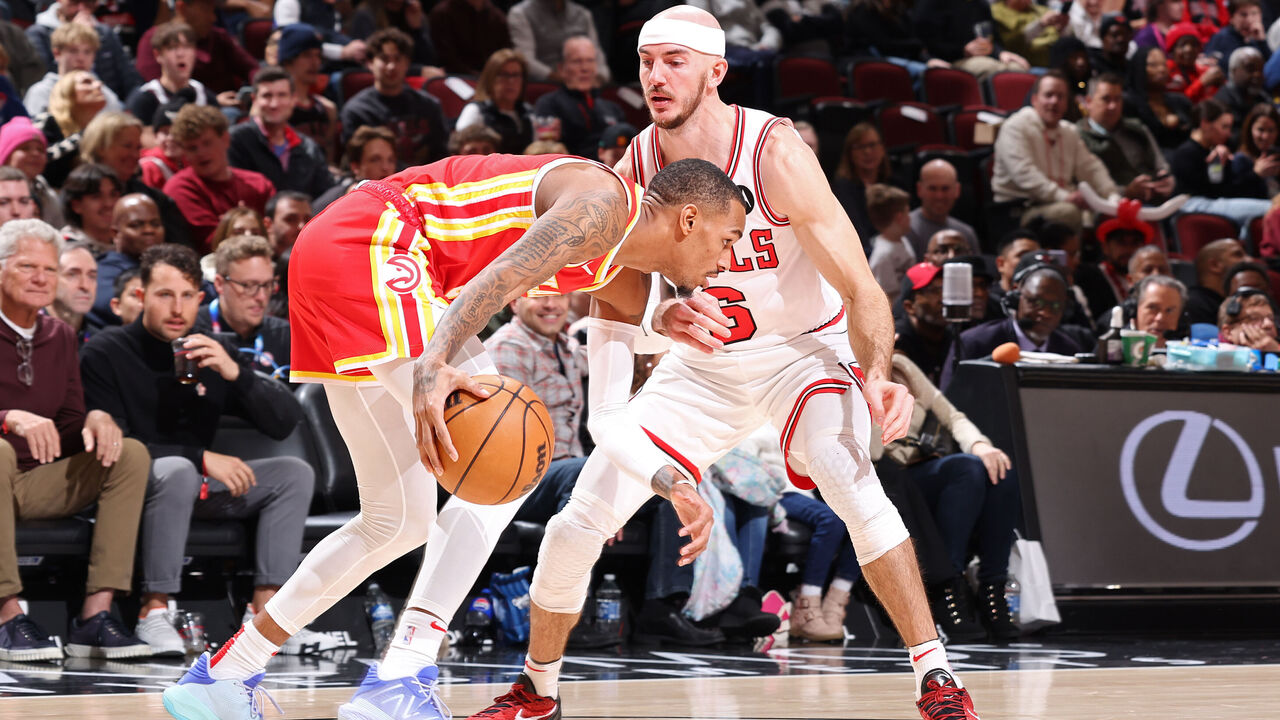4 big-picture takeaways from NBA deadline day
Though the NBA’s trade season started with a bang, as OG Anunoby, Pascal Siakam, and Terry Rozier each found themselves on playoff contenders in the span of three weeks, that head start left deadline day without much star power. Still, 18 trades were completed between Wednesday and Thursday, with ripple effects felt across the league. Here are four big-picture takeaways from this week’s movement.
Find analysis on every deadline-day deal here.
So much for a seller’s market

With so many flawed playoff teams in need of reinforcements and so few teams with an impetus to take a step back this season, it seemed like the small number of would-be sellers were poised to cash in at this deadline.
So much for that.
While the Pistons and Hornets made the trades they needed to make, they acquired just one first-round pick between them. Meanwhile, a ton of other players who appeared to be (or at least should’ve been) on the block wound up staying put, including Bruce Brown in Toronto, Dejounte Murray in Atlanta, Alex Caruso and Andre Drummond in Chicago, and Kyle Kuzma and Tyus Jones in Washington. You can argue that those teams – which range from mediocre to exceedingly awful – should’ve taken the best offers available, but it seems like the markets for their players never really developed.
Chalk it up to risk-aversion on the part of the buyers, unrealistic asking prices on the part of the sellers, or the fact that so many of the league’s first-round picks are concentrated with a few teams (the Thunder, Jazz, Spurs, and Pelicans) that weren’t inclined to trade them. Whatever the reason or confluence of reasons, we ended up with a deadline in which most of the upgrades made by competitive teams were marginal. Of those teams, only the Knicks and possibly Thunder (pending Gordon Hayward’s health) made moves of real significance.
Of course, a big part of the reason for the quiet deadline day is that a bunch of higher-profile moves went down in the lead-up to it. Anunoby, Siakam, Rozier, and James Harden have already changed teams this season. Teams will also have the opportunity to go shopping on a robust buyout market that’ll include Kyle Lowry and Spencer Dinwiddie. It was still surprising to see teams with clear needs, like the Kings, Lakers, Warriors, and Pelicans, come away with nothing. – Joe Wolfond
Knicks the big winners

I know the 2012-13 Knicks won 54 games and a playoff series, and I understand the need for cautious optimism given injuries to Mitchell Robinson, Anunoby, and Julius Randle (plus Jalen Brunson’s recent ankle ailment), but I’m already convinced this is now the best Knicks team since the turn of the century.
Though the Celtics are still overwhelming favorites in the Eastern Conference, the 2024 Knicks represent New York’s most realistic shot at a Finals berth in a generation. The team’s late-December move for Anunoby better balanced the roster, gave the Knicks the type of big wing defender every contender needs, and broke up the redundant combination of Randle and RJ Barrett. In turning Quentin Grimes, expiring salaries, and a couple of second-round picks into Bojan Bogdanovic and Alec Burks on deadline day, the front office has now put the finishing touches on a formidable team that can build on a 2023 trip to the East semis and on a 16-3 run in 2024 that has the Knicks in a race for the conference’s No. 2 seed.
New York already boasts top-seven marks on both ends of the court, but its seventh-ranked offense was much less playoff-proof than its sixth-ranked defense. Bogdanovic and Burks help address that.
With Randle and Anunoby out, Bogdanovic will serve as a solid secondary scorer alongside Brunson. At full strength, the Knicks will likely bring Bogdanovic off the bench, but his combination of self-creation, shooting, and veteran know-how will be a major boost for New York’s attack, opening up valuable space for Brunson and Randle to work with. As a 40% shooter from deep, Burks could become a key weapon off Tom Thibodeau’s bench and team with Bogdanovic to help juice what has thus far been a below-average shooting team.
With two All-Stars, three 20-point scorers, an all-world defender, and plenty of depth, the Knicks have just about every piece in place you could ask for outside of a bona fide superstar, and some would argue Brunson’s play has him knocking on that door. Again, they need to get healthy, but while everyone was waiting to see what New York would do with a boatload of extra draft picks and potential 2025 cap space, the Knicks have gone about building something that looks pretty darn close to a genuine contender in the present. – Joseph Casciaro
There’s no saving the Lakers this year

After a flurry of midseason transactions took last year’s Lakers from play-in afterthought to Western Conference finalists, much was expected of the league’s glitziest franchise this season. When the Lakers failed to live up to expectations, blindly optimistic fans assumed general manager Rob Pelinka could simply pull another deadline-day rabbit out of his hat. The only question was, who would it be? Dejounte Murray? Tyus Jones? Collin Sexton? A reunion with Alex Caruso?
Alas, Pelinka appears to be out of tricks, and adding Spencer Dinwiddie off the buyout market won’t change the fact that this team simply isn’t good enough to compete in a stacked West.
Injuries to Gabe Vincent, Jarred Vanderbilt, Cam Reddish, and Rui Hachimura have hurt the team’s depth, but the Lakers have to confront reality. LeBron James remains an All-NBA caliber superstar defying the laws of aging, and he’s missed only six games. Anthony Davis is playing some of the best basketball of his Hall of Fame career and has missed only four contests. Austin Reaves has suited up for all 52 of Los Angeles’ games. The recently improved D’Angelo Russell – L.A.’s third-leading scorer – has missed only four. And yet, the Lakers find themselves languishing in ninth place, closer to 11th (two games) than they are to sixth (3.5), with a 20th-ranked offense and a 14th-ranked defense.
Even in 1127 minutes with both James and Davis on the court, the Lakers are a pedestrian plus-1.3 per 100 possessions, according to NBA.com. In other words, the Lakers are so wholly uninspiring as a collective that even with two top-15 players sharing the court, they play at a level somewhere between the Pacers and Rockets.
In that light, perhaps it’s easier to understand why Pelinka didn’t make a short-sighted move to boost the Lakers’ 2024 title odds. But how will that play with James, who’s rarely had a contending-level supporting cast around him since winning the 2020 championship? He can opt for free agency if he declines his ($51.4-million) 2024-25 player option.
Those same blindly optimistic Lakers fans will tell you the team can use up to three first-round picks in trade talks this summer, but if a game-changing star becomes available, good luck pitting that modest collection of draft assets up against the treasure trove of picks teams like Oklahoma City, Utah, San Antonio, New Orleans, Brooklyn, and New York, among others, can cobble together. – Casciaro
Raptors continue to confound

Even though they ostensibly picked a direction by trading Anunoby and Siakam weeks before the deadline, the Raptors’ team-building approach remains a bit of an incoherent mess. For the second straight year, despite being positioned as a clear seller, they dealt a first-round pick while holding onto their most prized trade chip on deadline day.
To be clear, the trade they made today was far more defensible than the one they made for Jakob Poeltl last year. Moving a pick that’s likely to land 28th or later in a maligned draft in exchange for Ochai Agbaji (a lottery pick in 2022) and Kelly Olynyk (a useful vet on an expiring deal) is perfectly fine in a vacuum. But for a rebuilding team, you can argue that four years of rookie-scale production from a 2024 draft pick, even a late first in a purportedly weak class, would be preferable to two more years of rookie deal Agbaji, whose shooting hasn’t translated to the NBA level and is already almost 24.
Even if you prefer Agbaji to a lottery ticket at the tail end of the first round (which, again, is a perfectly defensible opinion given Agbaji’s 3-and-D potential), Toronto’s moves wind up feeling pretty scattershot in totality. Bruce Brown, one of the most desirable players known to be available at the deadline, stayed put despite the Knicks reportedly offering a first-rounder along with Evan Fournier’s expiring contract before pivoting to Burks and Bogdanovic. Brown will still have suitors in the offseason, but with a $23-million team option for next season, this was the time to trade him to get something of value back and create a huge chunk of cap space. Now, it looks like they’ll have to choose between value and cap space.
If they wind up going the cap-space route, that’ll likely mean just declining Brown’s team option, which will close the book on the Siakam trade return at two first-round picks, Jordan Nwora, Agbaji, and Olynyk (if they choose to re-sign him). If they choose to keep Brown into next season or trade him for an equivalent salary, then they’ll already be close enough to MLE territory that operating as an over-the-cap team (and re-signing Olynyk and Gary Trent Jr.) will make more sense. In that case, trading Dennis Schroder in a straight salary dump will look a lot worse in hindsight.
Clearing Schroder’s 2024-25 money off the books was eminently sensible when it still looked like Brown would get dealt and might still work out in the Raptors’ favor if they open up cap space and convince a quality free agent like Malik Monk or Nic Claxton to take their money. But keeping Brown and Trent Jr. made that move feel like more of a half measure.
The Raptors are still generally on the right track – or at least a track – in collecting young pieces and building around Scottie Barnes. (Even the 32-year-old Olynyk, as a playmaking stretch big, can fit into that plan.) But there’s a certain sense of clarity that continues to elude them. Their deadline wasn’t necessarily good or bad; it was just all over the place. – Wolfond


